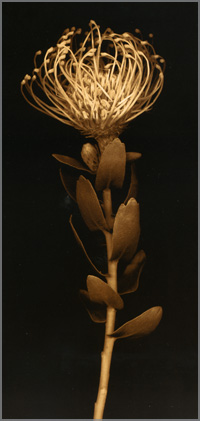
I recently saw a film that absolutely transcended previous cinematic experience. It was called Into Great Silence, and as the name implies it was mostly silent, and close to three hours long.
It was unlike anything I have ever seen, right from the very first few frames…
Grainy old-fashioned film leisurely following snow flurries and dust motes in the cold winter light; morning in a Carthusian monastery high in the French alps; the almost imperceptible movement of the
stars across the night sky; the almost unbearable tenderness of men’s voices, singing their
prayers direct to God’s ear.
Time winds like a long, repetitive round of sound and light in this film … morning passing into day
into dusk and then night, dissolving into dawn and morning, again and again.
The seasons pass in a parade of light and shadow so slow you can barely see it move, the relentless red thread of time woven through all things.
I entered into it like I would a long meditation … my mind
chattering away at first ["What am I doing this for?" "God, this is
uncomfortable" "I’ll never sit here for 3 whole hours"] even as my body
slows and prepares to still… I slowly sink into the mesmerizing images
and sounds of the great silence on the screen, as its magic wraps itself around me and all of us in the room. We are so quiet we can hear every movement, every piece of popcorn crushing and sound from the movies next door, but our collective attention is so focused these sounds don’t distract us.
The experience is luxurious, painterly, yet never less than austere. We take the time to dwell lovingly on small details one could only be aware of when the pace is that slow… the images are almost excruciatingly beautiful and absolutely ordinary, a metal wash bowl propped against the wall, rocking slowly as water drains away.
In the grainy film colors lose their distinction, outlines blur and particles merge dissolving into each other. As in a dream, I kept reaching in awe for my camera to record what was being revealed around me, only to be shocked to find I am in a seat watching a movie.
As part of the round of cinematic repetition, quotes in three languages kept appearing on the screen, over and over. One quote captures my attention each time, "Oh Lord, you have seduced me. And I was seduced." Every syllable strikes a chord & vibrates in my psyche.
This film seduced me with its rich thirst for silence; I wanted to surrender, like the monks, to simplicity and the raw beauty of the perfect eternal present. I was seduced by the rhythmic throb of nature’s pattern, wanting to give myself into it utterly, as if responding to the call of an insistent lover. It seduced me like the love of God had seduced those monks.
It seemed dream-like, a million miles away, but these were young men, living now, in modern times. Every now and then there would be some detail to bring that modernity home – a computer in someone’s room, or some bright packaging, a sticker on fruit. But they were living a life that was as old as time; their song books illuminated manuscripts from the 17th century, read by the light of candles; their feet treading stones that had been trod for centuries.
I was right there with them, my senses completely alive, cells toughening to withstand the cold as I knelt on the hard stone, planted the early shoots while snow still lie on the ground. I felt myself shyly expand into the warmth and joy of the short but utterly sweet summer, then let it go when the time and season changed. A year passed, and yet the flow continued; another winter, season into season, life into life, youth into age and dark into light.
When it finally ended, I wasn’t ready to go. My companion and I just sat there in the dark empty cinema, listening to the shifting scene around us, preparing to leave the silence … adapting to the current of our lives, the here and now of the Berkeley street just outside the doors … it wasn’t an easy transition, but I could sense the beauty in the silence that still remained, the eternal silence that always remains at the center of everything, and that was enough somehow.
Afterwards, talking about my experience with others, and again now writing about it, I am struck by what an amazing phenomenon it really was… far beyond anything I’ve ever experienced in a film before. It’s almost like it changed the molecular structure of my body; certainly it took my consciousness someplace I’ve never been except after many hours of meditation.
In spiritual work, they say that once you’ve ‘woken up’ you can never go back to sleep again, at least not in that completely unaware way; similarly, I believe the experience of sitting with this film for three hours can change you; if you surrender to it you’ll never be the same again.


 I’m not sure why I felt so compelled to attend Ellen’s memorial – after all, I didn’t know her all that well & our connection might be seen as tenuous (Ellen was my fiancé Steve’s son Lee’s grandmother). But she was a central figure in this admittedly unconventional family I’m part of, and somehow I needed to be there.
I’m not sure why I felt so compelled to attend Ellen’s memorial – after all, I didn’t know her all that well & our connection might be seen as tenuous (Ellen was my fiancé Steve’s son Lee’s grandmother). But she was a central figure in this admittedly unconventional family I’m part of, and somehow I needed to be there.
Welcome!